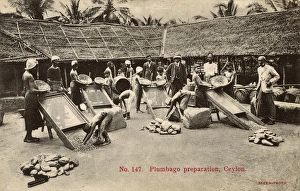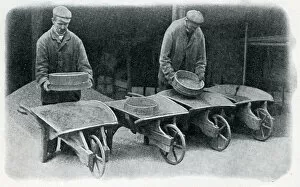Sieves Collection
"Sieves: A Timeless Tool for Filtering and Sorting" they have been an essential tool throughout history, serving various purposes in different cultures
All Professionally Made to Order for Quick Shipping
"Sieves: A Timeless Tool for Filtering and Sorting" they have been an essential tool throughout history, serving various purposes in different cultures. From the plumbago preparation in Ceylon (Sri Lanka) to the bustling streets of Japan, they have played a crucial role in everyday life. In the late 19th century, a page from a catalogue for the Ironmongery and Hardware Trades showcases the diversity available during that time. The litho print captures their intricate designs and sturdy construction, highlighting their durability. An engraving titled "The Sieve Maker" depicts a skilled craftsman meticulously crafting these indispensable tools. His dedication to his craft is evident as he carefully weaves together each strand with precision and expertise. A captivating photograph from the 1870s shows a Japanese man posing proudly with baskets, brooms, and feather dusters - all made possible by sieves. These versatile instruments were used not only for sifting flour or sugar but also for separating grains or cleaning delicate objects. Across continents, sieves found their place in diverse industries. In Jamaica, workers can be seen preparing rice using large-scale sieving techniques. This labor-intensive process ensured that only quality grains made it through while removing impurities. Even within workhouses like those depicted on another page from the same catalogue mentioned earlier, able-bodied inmates utilized sieves as part of their daily tasks. These humble yet efficient tools helped sort materials or separate unwanted debris efficiently. As time progressed into the early 20th century, catalogues such as Army and Navy Stores Catalogue featured pages dedicated solely to showcasing an array of modernized sieves suitable for evolving needs. Their litho prints showcased sleek designs combined with practicality - catering to both professionals and households alike. From kitchens to factories to agricultural fields worldwide – they have remained steadfast companions over centuries past. Their versatility has allowed them to adapt seamlessly across cultures and industries, proving their indispensability.
















